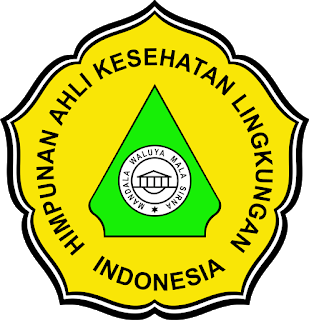Bahasa
DOI:
https://doi.org/10.32382/sulo.v25i2.1606Keywords:
BahasaAbstract
In hospitals, vector and disease-carrying animal control is very important because interaction between healthy and sick patients increases
the risk of disease transmission. A preliminary study at RSI Jemursari showed that several types of vectors and disease-carrying animals were
still found, along with several complaints related to their presence. This study aims to analyze the density of vectors and disease-carrying
animals in hospitals. This study is a descriptive study with a cross-sectional approach over a specific period. The sample in this study includes
mosquitoes, flies, cockroaches, and rats in inpatient areas with complaints, nutrition facilities, domestic waste and hazardous waste (B3)
disposal sites, gardens, and canteens/cafés. Data were collected through observation, measurement, and interviews with pest control and
sanitation staff at the hospital, then analyzed descriptively. The results showed that the fly population index in the nutrition unit, hazardous
waste disposal site, and cafeteria/café met the criteria, but the domestic waste disposal site did not meet the criteria. Mosquito density based
on habitat population index and container index met the criteria, but larvae were still found in the landfill outside the hospital building. The
cockroach population index met the criteria, while rat density based on success traps did not meet the criteria. Overall, the control strategy
at RSI Jemursari is in the good category, but it needs to be strengthened with monitoring of the environment outside the building, optimization
of drainage, improvement of sanitation in storage areas, and environment-based vector control to create a healthier environment for patients,
medical and non-medical staff, and hospital visitors.
References
Aisyah, N.I. and Porusia, M. (2020) ‘Gambaran Keberadaan Vektor Penyakit dan Binatang Pengganggu di Rumah Sakit Universitas Sebelas Maret (UNS) Tahun 2020’, Skripsi thesis, Universitas Muhammadiyah Surakarta. [Preprint].
Aisyah, S. and Ardan, M.A. (2024) ‘Evaluasi Sistem Pengendalian Vektor dan Binatang Pengganggu di Rumah Sakit Umum Medika Sangatta’, Jurnal Pengabdian kepada Masyarakat Nusantara, 5(2), pp. 2021–2027. Available at: https://doi.org/10.55338/jpkmn.v5i2.3162.
Apriliani Lase et al. (2024) ‘Analisis Sanitasi Lingkungan dan Pengendalian Nyamuk di Kota Tarutung’, TOBA: Journal of Tourism, Hospitality and Destination, 3(1), pp. 26–32. Available at: https://doi.org/10.55123/toba.v3i1.4098.
Cook, K. et al. (2025) ‘Flies as Carriers of Antimicrobial Resistant (AMR) Bacteria in Nigerian hospitals : A Workflow for Surveillance of AMR Bacteria Carried by Arthropod Pests in Hospital Settings’, 196(September 2024).
Davoust, B. et al. (2021) ‘Detection of Zoonotic Pathogens in Animals Performed at The University Hospital Institute Méditerranée Infection (Marseille – France)’, One Health, 12. Available at: https://doi.org/10.1016/j.onehlt.2020.100210.
Dewi, M. et al. (2024) ‘Pengenalan Bioekologi Vektor dan Binatang Pembawa Penyakit sebagai Upaya Mewujudkan Mandiri Kesehatan di LKSA/Panti Asuhan Darul Tazkiyah Palangka Raya’, Jurnal Abdi Insani, 11(4), pp. 1612–1618. Available at: https://doi.org/10.29303/abdiinsani.v11i4.1946.
Farid, Budiman and Rismawati, N. (2023) ‘Perbandingan Jumlah Kecoa berdasarkan Jenis Umpan diBandara Mutiara Sis Al Jufri Palu’, Jurnal Kolaboratif Sains, 6(12), pp. 1741–1751. Available at: https://doi.org/10.56338/jks.v6i12.4271.
Febriyanti, W. and Porusia, M. (2023) ‘Kajian Literatur Pengendalian Kecoa Jerman (Blattella germanica) dengan Bioinsektisida’, Jurnal Kesehatan Masyarakat, 11(6), pp. 602–613. Available at: https://doi.org/10.14710/jkm.v11i6.37705.
Ferida Siti, Q. (2022) ‘Literature review: hubungan tempat penampung air dengan kepadatan jentik nyamuk aedes aegypti sebagai vektor penyakit demam berdarah dengue’. Available at: http://digilib.unisayogya.ac.id/6297/%0Ahttp://digilib.unisayogya.ac.id/6297/1/NASKAH PUBLIKASI_FERIDA SITI QONA%27AH - Ferida Sitiq.pdf.
Herdianti et al. (2024) ‘Evaluasi Efektivitas Metode Penanganan Vektor di Lingkungan Rumah Sakit X Kota Batam’, Jurnal Kesehatan Ilmiah Indonesia ( Indonesian Health Scientific Journal ), 9(2).
Hikmawati, W.O., Yasnani and Nurmaladewi (2020) ‘Gambaran Keberadaan Vektor Penyakit dan Binatang Pengganggu di Rumah Sakit Umum Daerah Kota Kendari Tahun 2024’, Journal of Health Science Leksia, 3(2).
Inriani, S. (2023) ‘Gambaran Pengendalian Vektor Di Rumah Sakit Islam Ibnu Sina Padang Panjang Tahun 2023’, Diploma thesis, Universitas Muhammadiyah Sumatera Barat., VIII(I), pp. 1–19. Available at: http://eprints.umsb.ac.id/id/eprint/2140.
Irawati, J., Fibriana, A.I. and Wahyono, B. (2015) ‘Efektivitas Pemasangan Berbagai Model Perangkap Tikus Terhadap Keberhasilan Penangkapan Tikus Di Kelurahan Bangetayu Kulon Kecamatan Genuk Kota Semarang Tahun 2014’, Unnes Journal of Public Health., 4(3), pp. 67–75. Available at: https://doi.org/10.15294/ujph.v4i3.6374.
Iswara, D. et al. (2022) ‘Kelimpahan Serangga pada Berbagai Perangkap dengan Beberapa Teknik Pengendalian Berbeda pada Pertanaman Jagung Pioneer 36 Dana’, Argoplasma, 9.
Kemenkes RI (2020) ‘Permenkes No 3 Tahun 2020 Tentang Klasifikasi dan Perizinan Rumah Sakit’, Tentang Klasifikasi dan Perizinan Rumah Sakit, (3), pp. 1–80. Available at: http://bppsdmk.kemkes.go.id/web/filesa/peraturan/119.pdf.
Kemenkes RI (2023) ‘Peraturan Menteri Kesehatan Republik Indonesia Nomor 2 Tahun 2023’, Kemenkes Republik Indonesia, 151(2), p. Hal 10-17.
Muh Alfisyach, A. (2025) ‘Pengendalian Vektor Tikus dengan Metode Fisik Perangkap dan Umpan Tikus’, Literature Review KESEHATAN MASYARAKAT KESEHATAN LINGKUNGAN [Preprint], (April).
Mulyaningsih, B. (2023) ‘Identifikasi Spesies Dan Indeks Keragaman Lalat Pada Fasilitas Penampungan Sampah Rumah Sakit Umum Di Yogyakarta’, Jurnal Skala Kesehatan, 14(2), pp. 119–128. Available at: https://doi.org/10.31964/jsk.v14i2.410.
Nirwan, M., Rafiuddin, A.T. and Amraeni, Y. (2024) ‘Biodiversitas Lipas Dan Penerapan Biosekuriti Pada Rumah Sakit Umum Daerah Dan Swasta Di Kota Kendari Sulawesi Tenggara’, ASPIRATOR - Jurnal Penelitian Penyakit Tular Vektor, 15(2).
Nugroho, B. (2019) ‘Analisis Hubungan Kelembapan dan Sanitasi terhadap Kepadatan Kecoa di Area Dapur Rumah Sakit’, Jurnal Kesehatan Lingkungan, 16(2), pp. 77–84. Available at: https://ejournal.unair.ac.id/JKL/article/view/9045.
Nurbayani et al. (2021) ‘Hubungan Kondisi Sanitasi dengan Keberadaan Kecoa pada Kapal Penumpang di Pelabuhan Ulee Lheue Kota Banda Aceh’, Jurnal Serambi Akademica, 9(1), pp. 1–11. Available at: https://www.ojs.serambimekkah.ac.id/serambi-akademika/article/view/2796.
Pratama, A.C.R., Rudy, J. and Misbahul, S. (2022) ‘Pengaruh Sanitasi Lingkungan Dan Kualitas Fisik Ruangan Terhadap Jumlah Kepadatan Lalat Di Home Industri’, Media Husada Journal of Environmental Health, 2(1), pp. 145–151.
Puruhita, K.A., Hajimi and Jaleha (2021) ‘Flies Density Level in the Nutrition Installation of M. Th Djaman Sanggau Regional General Hospital’, Jurnal teknologi Kesehatan Borneo, 2(1), pp. 6–19. Available at: https://doi.org/10.30602/jtkb.v2i1.31.
Rachmawati, K.D., Rusmiati and Khambali (2022) ‘Implementasi Metode CIPP Pada Evaluasi Program Pengendalian Vektor Di Rumah Sakit Untuk Menurunkan Risiko Penularan Penyakit’, Gema Lingkungan Kesehatan, 20(1), pp. 42–48. Available at: https://doi.org/10.36568/gelinkes.v20i1.4.
Riani, S., Nurpauziah, I. and Permana, A.D. (2024) ‘Efikasi Tiga Jenis Rodentisida Sintetik terhadap Tikus Riul ( Rattus Norvegicus ) pada Rumah Sakit Tipe B Kota Bandung’, 4(September), pp. 432–438. Available at: https://journal-stiehidayatullah.ac.id/index.php/tadbir/article/view/499/412.
Rini, M., et al. (2020) ‘Pengaruh Drainase dan Pengelolaan Limbah terhadap Kepadatan Vektor di Fasilitas Kesehatan’, Jurnal Kesehatan Lingkungan Nasional, 19(4), pp. 250–258. Available at: https://jurnal.poltekeskupang.ac.id/index.php/jkln/article/view/230.
Sintia, F., Susilawati and Fathmawati (2020) ‘Gambaran Higiene Sanitasi Pengelolaan Makanan di Rumah Sakit ABC Kabupaten Kubu Raya Kalimantan Barat’, Jurnal Sehat Mandiri, 15(1), pp. 33–40. Available at: https://doi.org/10.33761/jsm.v15i1.203.
Susanti, F.A., Maharani, N.E. and Nurbaya, F. (2025) ‘Analisis Kepadatan Tikus di Wilayah Kerja Balai Kekarantinaan Kesehatan Kelas II Yogyakarta Tahun 2023’, Jurnal Ilmiah Permas: Jurnal Ilmiah STIKES Kendal, 15(1), pp. 75–82. Available at: https://journal2.stikeskendal.ac.id/index.php/PSKM/article/view/1979/1260.
Wahono, T., Widjayanto, D. and Poerwanto, S.H. (2022) ‘Karakteristik Habitat Larva Nyamuk dan Kepadatan Nyamuk Dewasa (Diptera: Culicidae) di Kabupaten Jembrana, Provinsi Bali (Analisis Data Sekunder Rikhus Vektora 2017)’, ASPIRATOR - Journal of Vector-borne Disease Studies, 14(1), pp. 45–56. Available at: https://doi.org/10.22435/asp.v14i1.5038.
Wahyudiarto, A.D., Yuniastuti, T. and Joegijantoro, R. (2023) ‘Efektivitas Ekstrak Daun Mimba (Azadirachta indica juss) terhadap Kematian Lalat Rumah (Musca domestica) di Lingkungan Rumah Sakit Umum Daerah dr.H.Koesnadi Bondowoso’, Jurnal Kesehatan Tambusai, 4(3), pp. 2988–2995. Available at: https://doi.org/10.31004/jkt.v4i3.16511.
WHO (2014) Safe management of wastes from healthcare activities. 2nd ed. Edited by Y. Chartier. WHO Library Cataloguing-in-Publication Data.
WHO (2024) Vector-borne diseases, WHO newsroom. Available at: https://www.who.int/news-room/fact-sheets/detail/vector-borne-diseases.
Wikurendra, E.A. (2020) ‘Pengukuran Ovitrap Index (Oi) Sebagai Gambaran Kepadatan Nyamuk Di Rw 6 Kelurahan Tenggilis Mejoyo Kecamatan Tenggilis Mejoyo Kota Surabaya’, Human Care Journal, 5(1), p. 320. Available at: https://doi.org/10.32883/hcj.v5i1.603.
Wulandari, K. and Wahyudin, D. (2018) ‘Sanitasi Rumah Sakit’, in. Jakarta Selatan: Pusat Pendidikan Sumber Daya Manusia Kesehatan.
Downloads
Published
How to Cite
Issue
Section
PDF (Bahasa Indonesia) downloaded: 0


















